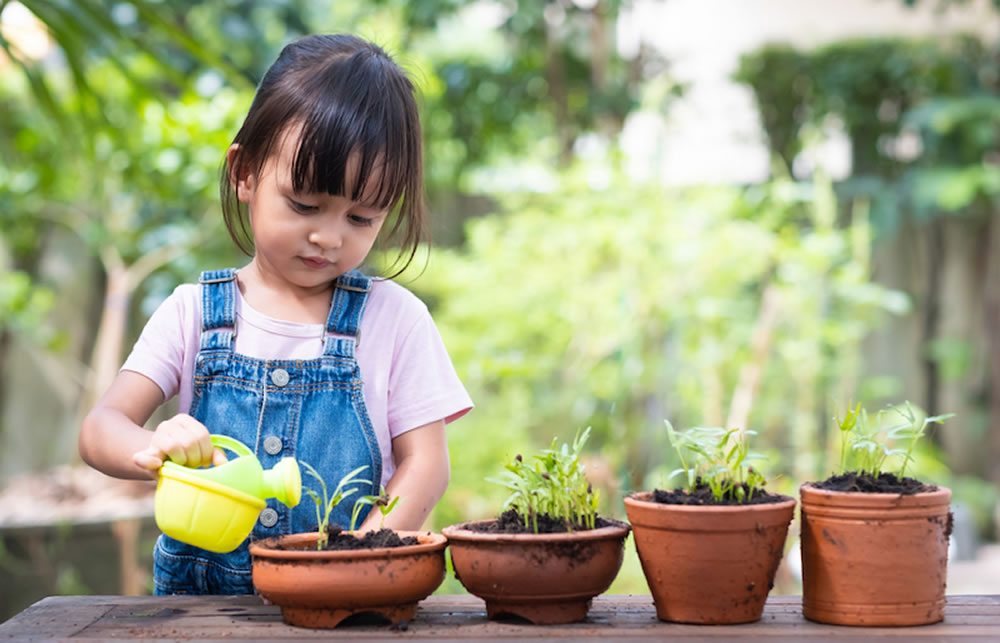Learning about nature - The gift that never fades
Published on Tuesday, 31 March 2020
Last updated on Monday, 06 April 2020

The natural world offers curious children an abundance of opportunities to explore, experience and learn. Engaging with the beauty and wonder of a natural environment offers a range of benefits and can help to relax, inspire and boost the physical and mental health of young children.
Through high quality programs and activities, early childhood educators can provide a learning culture through play and creativity where children can develop the skills and confidence to connect with the natural world. In the past, outdoor exploration was an everyday experience but now with 67 per cent of us living in capital cities, 23 per cent in other urban areas and just 10 per cent living in rural Australia, opportunities for experiencing natural environments require explicit and purposeful planning.
No matter where a service is located, there are opportunities for providing children with nature-based experiences and it is helpful for children to understand that ‘nature’ is all around them.
The National Quality Standards require early childhood services to support children to become environmentally responsible. A starting point for educators is to simply encourage children to play in nature and role model behaviours to show appreciation for the environment.
What is environmental education?
Environmental education for young children seeks to promote knowledge about nature, the ways we depend upon it for survival, and the actions we can take to protect and improve it. Understanding that the health of the Earth and the health of people are tightly interconnected is a core principle.
An understanding of the environment also teaches children about sustainability issues and the importance of protecting our world from challenges such as climate change, biodiversity loss and issues such as deforestation.
Small steps to nurture learning in nature
Ruth Wilson, a strong advocate for environmental education in early childhood, and linking young children with nature, has developed helpful guidelines for early childhood services seeking to introduce more environmental education for young children:
Begin with simple
Children can begin by walking barefoot in the grass or sand. Experiences should be pleasant and memorable and keep children actively involved by encouraging them to touch and experiment.
Emphasise experiences
Rather than direct instruction, it is important to emphasise learning by experiencing. Give children interesting opportunities to explore and investigate their own questions.
Provide multimodal learning experiences
When teachers involve full use of the senses, such as visual spatial and body-kinaesthetic, children are more fully engaged and construct more elaborated and lasting representations of the world.
Focus on relationships
Maintain a warm, accepting, and nurturing atmosphere so that children feel secure in their explorations of nature and also build interpersonal and intrapersonal skills.
Demonstrate personal interest
Teachers should model interest in and enjoyment of the natural world because children emulate their teachers.
Introduce multicultural experiences and perspectives
Invite individuals with different cultural experiences to share their perspectives and knowledge about the natural world. Consider inviting family members to share their knowledge of fishing, bird watching and gardening.
Go outdoors often
Whenever possible! In “forest schools” in Norway and the UK and in bush schools in Australia, children spend most of their time outdoors in all weather.
Infuse environmental education into all aspects of the program
Include seasonal displays, discuss where food comes from during lunch or snack, and incorporate nature and natural materials into learning centres and literacy, math, and science experiences.
Ask children questions that require opinions and ideas, not facts, such as: Where do you think that insect is going? Have you ever seen one like this before? Isn't the sky beautiful today? Would you like to paint a picture of the sky?
Ideas to bring nature to your doorstep
Take a proactive role and engage children in helping and caring for the environment. Involve families and engage them in these following activities and encourage them to try these at home by providing simple instructions. Here are just a few learning opportunities you can participate in with young children to bring nature to your local environment:
Bird feeder
Attract birds with a DIY bird feeder for the playground, outside a window or for kids to take home. Or put in a birdbath for observing visiting birds. Watching birds provides endless opportunities for teaching about migration, bird species and behaviour. Accompany this learning with some fun bird themed activities.
Attract beautiful butterflies
Plant brightly coloured, nectar-rich flowers like butterfly bush or lavender in your playground garden or in pots. Ensure some sunny resting spots as butterflies love the sun – but note, they don’t like too much wind. Have some water for them as they like damp, sandy, or muddy puddles which you can mimic by filling a shallow bowl or pan with damp sand or soil and placing it in your garden.
Build a bug hotel
Children love searching out bugs with a magnifying class in hand and insects are nature's little helpers in the garden. They bring health and balance through protection, pollination and seed dispersal. There is no standard design for a bug hotel, preferably use recycled and natural materials and be creative with the materials you have.
References and further reading
Community Playthings: Nurturing Environmental Awareness in Children
Young Children: Environmental Education: A Natural Way to Nurture Children’s Development and Learning
Novak Djokovic Foundation: Children learning about ecology and the environment
Related Articles

Going green improving sustainability practices in your centre
Boosting sustainbility practices in your service to lessen the effects of climate change and ensure future generations can continue to thrive.

Improve your sustainability practices now
Sustainability expert Lucy Sharman developed training for early childhood services on improving sustainability practices and building environmentally sound policies into the everyday operation of child care centres.

Waste reduction ideas you can start now
Waste reduction strategies for early learning services that want to downsize their environmental footprint.

